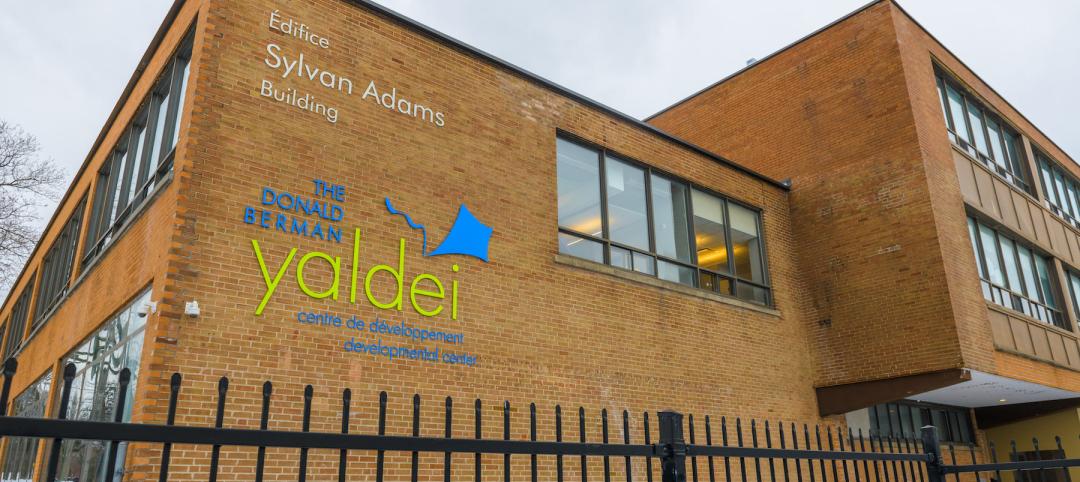Financing for school construction depends primarily on local bond referenda, so it’s difficult to make a blanket statement about national trends. However, Paul Abramson, Education Market Analyst for the School Planning & Management magazine, has estimated that school spending for project completions of construction, additions, and renovations hit $14.1 billion in 2014, or 5.4% more than the previous year.
AEC professionals say that, on a case-by-case basis, individual projects are being adequately financed. But many districts are struggling to have new construction and renovation keep pace with student population growth.
Montgomery County, Md., has seen its student count increase by nearly 12%, to 154,230, since 2007. More than 9,000 students are being taught in portable classrooms. The district expects its student count to reach 165,358 by 2020, according to the Washington Post. District Superintendent Joshua Starr has asked for $221 million to be added to the district’s six-year capital improvement budget, which would bring it to $1.75 billion.
“There are five million PK-12 students in Texas, and we’re gaining 100,000 students per year, which translates into a need for 100 campuses.” — Dan Boggio, President/CEO, PBK
In California, there’s a $2 billion backlog in applications for school-construction assistance from districts around the state, according to the Sacramento Bee. In January, construction and home-building groups launched a campaign to get a $9 billion school bond on California’s November 2016 ballot.
In other parts of the country, communities are backing school financing programs to modernize older buildings and keep up with student growth. “There are five million PK-12 students in Texas, and we’re gaining 100,000 students per year, which translates into a need for 100 campuses,” says Dan Boggio, President/CEO of architectural firm PBK. “School districts are very aware of this, and bond referendums [in Texas] have been passing by wide margins.”
For the past 15 years, bond financing has been steady in Wichita, Kan., where “we’ve done a lot of construction,” says Julie Hedrick, Facilities Division Director for Wichita Public Schools. This district is at the tail end of a $370 million bond passed in 2008, and currently is building a $60 million high school—its largest to date—and adding an auditorium and classrooms to two middle schools.
By a vote of three to one, voters in Shoreham, N.Y, recently approved the Shoreham-Wading River Central School District’s $33.5 million construction bond issue for a $48.5 million infrastructure and renovations program dubbed “The Renewal Project,” which will encompass all four schools operated by the district.
Orange County, Fla., last summer approved a half-cent sales tax extension that will help fund school construction program through the next decade. The county has about $300 million in school projects already in the works.
Under its latest school construction bond, valued at $748 million, the Frisco (Texas) Independent School District, purchased 16 school sites over the past five years. It has two high schools, two middle schools and one elementary school under construction. The Frisco ISD, which lies about 30 miles north of Dallas, will hit 50,000 students in 2015, and has been adding 3,000–3,800 a year.
A 2012 bond valued at $74.9 million should cover the six facilities that Western Maricopa County Education Center in Arizona expects to complete over the next few years. A $482 million bond passed in 2012 is allowing Portland (Ore.) Public Schools to modernize three high schools and rebuild a K-8 school.
Joseph DaSilva, who oversees school construction for the Rhode Island Department of Elementary and Secondary Education, notes that the General Assembly’s moratorium on construction could be holding up as much as $100 million in financing for school projects.
To stretch their budgets, some districts are being more selective about which projects to pursue. The East Baton Rouge Parish (La.) School Board—which funds projects through a one-cent sales tax that extends through 2018—in January postponed plans to spend $6.2 million to renovate two elementary schools in 2016.
With bond and tax financing always uncertain, school officials remain cautious about seeking alternate capital streams from the investment and corporate sources. Charles McKenna, CEO of the New Jersey School Development Authority, says public-private partnerships may have worked in higher education—he cites the University of Kentucky and Arizona State University—but he’s “not sold” on PPPs for construction projects in the Garden State.
Related Stories
Contractors | Apr 10, 2023
What makes prefabrication work? Factors every construction project should consider
There are many factors requiring careful consideration when determining whether a project is a good fit for prefabrication. JE Dunn’s Brian Burkett breaks down the most important considerations.
Architects | Apr 6, 2023
New tool from Perkins&Will will make public health data more accessible to designers and architects
Called PRECEDE, the dashboard is an open-source tool developed by Perkins&Will that draws on federal data to identify and assess community health priorities within the U.S. by location. The firm was recently awarded a $30,000 ASID Foundation Grant to enhance the tool.
Architects | Apr 6, 2023
Design for belonging: An introduction to inclusive design
The foundation of modern, formalized inclusive design can be traced back to the Americans with Disabilities Act (ADA) in 1990. The movement has developed beyond the simple rules outlined by ADA regulations resulting in features like mothers’ rooms, prayer rooms, and inclusive restrooms.
Education Facilities | Apr 3, 2023
Oklahoma’s Francis Tuttle Technology Center opens academic center for affordable education and training
Oklahoma’s Francis Tuttle Technology Center, which provides career-specific training to adults and high school students, has completed its Francis Tuttle Danforth Campus—a two-story, 155,000-sf academic building. The project aims to fill the growing community’s rising demand for affordable education and training.
K-12 Schools | Mar 6, 2023
Benefitting kids through human-centric high school design
Ingrid Krueger, AIA, LEED AP, shares why empathetic, well-designed spaces are critical in high schools.
Sustainability | Mar 2, 2023
The next steps for a sustainable, decarbonized future
For building owners and developers, the push to net zero energy and carbon neutrality is no longer an academic discussion.
K-12 Schools | Feb 18, 2023
Atlanta suburb opens $85 million serpentine-shaped high school designed by Perkins&Will
In Ellenwood, Ga., a southeast suburb of Atlanta, Perkins and Will has partnered with Clayton County Public Schools and MEJA Construction to create a $85 million secondary school. Morrow High School, which opened in fall 2022, serves more than 2,200 students in Clayton County, a community with students from over 30 countries.
K-12 Schools | Feb 11, 2023
An elementary school in Canada for intellectually challenged kids completes a three-year-long facelift
Last fall, the Yaldei School in Montreal, Quebec, which provides education and therapy to children ages 4 through 16 with intellectual disabilities, completed a $4.5 million renovation of the three-story former parochial school that it had moved into in 2016. The goal of this project, by the firm Stendel + Reich Architecture, was to create spaces that relieve students’ anxiety and make things fun.
Giants 400 | Feb 9, 2023
New Giants 400 download: Get the complete at-a-glance 2022 Giants 400 rankings in Excel
See how your architecture, engineering, or construction firm stacks up against the nation's AEC Giants. For more than 45 years, the editors of Building Design+Construction have surveyed the largest AEC firms in the U.S./Canada to create the annual Giants 400 report. This year, a record 519 firms participated in the Giants 400 report. The final report includes 137 rankings across 25 building sectors and specialty categories.
Giants 400 | Feb 6, 2023
2022 Reconstruction Sector Giants: Top architecture, engineering, and construction firms in the U.S. building reconstruction and renovation sector
Gensler, Stantec, IPS, Alfa Tech, STO Building Group, and Turner Construction top BD+C's rankings of the nation's largest reconstruction sector architecture, engineering, and construction firms, as reported in the 2022 Giants 400 Report.
















